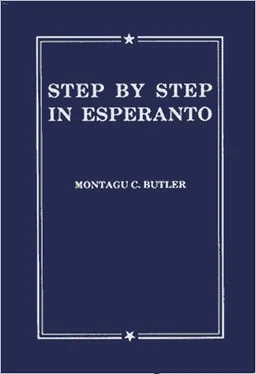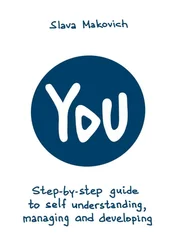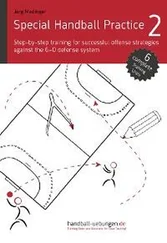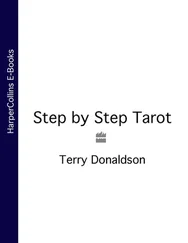290. Translate these questions and answer them. What are you complaining of? Which town do you come from? What are we reading through? What are we fighting for? What is your money in? Whom are you sitting near? What are you doubtful about? Whom are you waiting for? What does an apple grow on? Whom are you writing to? What are you talking about? Whom are you dreaming of?
291. Most sentences contain
(1) a SUBJECT (the thing or person we are talking about) and
(2) a VERB (which says what the subject is or does).
Thus, in la suno brilas,and li staras tie, la sunois the subject of the verb brilas,and liis the subject of the verb staras.The answer to What? Who? asked before a verb, is the subject of the sentence. What shines? ( la suno). Who stands? ( li).
292. Usually the subject comes before the verb. But it need not do so ( 20, 23). One may say, for example, Brilas la suno. Tie staras li.
293. Name the subject and the verb in sentences from previous lessons.
294. If you say I see, I love , we naturally ask: You see (love) what (or, whom )? The answer to What? Whom? asked after a verb, is the OBJECT of that verb. Thus, in the sentences Tom loves me, Tom loves music , the words me and music are objects of the verb loves — they answer the questions “ Loves whom?” “Loves what? ” — they name the objects loved by the subject Tom. The SUBJECT does the action: the OBJECT is that to which the action is directed.
The Ending «-n»: Pronouns
295. When the words I, thou, he, she, we, they, who, are objects of a verb, English changes them to me, thee, him, her, us, them, whom . Thus: I see him; he sees me. We see them; they see us . ( It and you , however, remain unchanged). [33]
296. Esperanto shows the object of a verb by the letter -N(called the “accusative” ending). Thus: min, vin, lin, ŝin, ĝin, nin, ilin, kiun. [34]
• Li vidas ili n, He sees the m.
• Ili vidas li n, They see hi m.
• Kiu nili vidas? Who mdo they see (They see who m)?
Here the “ m” in the m,hi m,who m, corresponds to the “ n” in ili n,li n,kiu n.
297. Kiuhelpas vin? Who helps you? Kiunvi helpas? Whom are you helping? Knabo, kiukonas [35]lin, a boy who knows him. Knabo, kiunli konas, a boy whom he knows. Libro, kiun( which, that ) mi legas (159).
298. The answer to Kiu?is the subject , and cannot take the letter n.The answer to Kiun?is the object , and takes the letter n. Kiuamas? (mi). Amas kiun? (vi n) (294).
299. Tuŝumi n, touch me. Kiu nvi tuŝas? (Mi tuŝas vi n). Kiu nmi instruas? (Vi instruas ni n). Sekvumi n, Follow me. Ne punuŝi n, Don’t punish her. Helpu ili n, Help them.
Patrino: “Ĉu vi supozas, ke mi punas vin por mia plezuro?” Infano: “Por kies plezuro, do, vi punas min?”
300. An Englishman says I love you. A Frenchman says I you love. In Esperanto one may say Mi amas vin, Mi vin amas, Amas mi vin, Amas vin mi, Vin mi amas,or even Vin amas mi.The difference in word-order varies the emphasis. But in each case the meaning is I love you , not You love me , for the letter n shows that vinis the object loved by the subject mi.

301. Ŝi amas lin. Li ŝin amas. Ŝi lin amas. Lin ŝi amas. Ŝin li amas. (Would li ŝi amas be clear?)
“Ĉu vi amas min, fraŭlino?” “Ne, sinjoro: ne vin mi amas.” “Kiun, do?” “Mi amas …”. “Ha! mi komprenas: tio estas sekreto!”
302. It is more usual to end a sentence with the verb than with the pronoun, especially if the sentence is long.
Min pardonu ( or, Pardonu min). Ne min forgesu ( or, Ne forgesu min). Mi vin gratulas. La infano lin timas. Li ŝin kisas. Mi vin dankas. Vin mi respektas: lin mi suspektas. Fiŝo ne iras, sed hoko ĝin tiras( pulls, draws ).
303. amuz atak defend envi gard imit mok puŝ riproĉ send
Using these roots, translate: You amuse me. If they attack us, the faithful dog defends us. Why do you envy him? The puppy’s mother is-guarding it. Are you imitating me? Don’t mock her. Why are you pushing them? No one is-reproaching you. Here am I! Send me!
304. All the -upronouns (154)take nin the same way.
“Eble vi konas iunen la ĉambro?” “Nu, mi ne konas ĉiun.” “Ĉu tamen vi konas tiuninfanon?” “Efektive, mi konas neniun.”
305. When these words go in pairs, separate them by a comma.
• Jen iu, kiu( some one who ) konas vin.
• Jen iu, kiun( some one whom ) vi konas.
• Mi vidas i un, kiukonas vin.
• Mi vidas iun, kiunvi konas.
Mi memoras ĉiun, kiun mi vidas. Mi konas neniun, kiu kantas. Ĉu vi vidas tiun, kiun mi vidas? Mi estimastiun, kiu estas honesta. Riĉa estas tiu, kiu ŝuldas al neniu.
306. We add -Nto nouns also in the same way. La knabo amas la hundoN, the boy loves the dog. La knaboN mi vidas, sed ne la knabinoN, it is the boy I see, not the girl.
Ki ONvi deziras? What do you want? (Mi deziras mon ON). Ki onmi tuŝas? (Vi tuŝas la tabl on).
Li manĝas pom on.Pom onli manĝas (300). Kiu manĝas? (Li). Kio nli manĝas? (pom on).
307. Ŝafo sekvas ŝafon. La ludo ne valoras la kandelon. Se vi donas mielon, donu ankaŭ kuleron. Gardu kandelon por la nokto. Li forgesas averton, sed memoras la sperton. Frapula feron, dum ĝi estas varma. [36]Vera amo ne konas mezuron.La nokto donas konsilon.Sama buŝo blovasvarmon kaj malvarmon. Ĉiu vento( wind ) blovas profitonal iu. Pesimisto: Iu, kiu vidas la mondon en nigra koloro.
308. Dialogo. “Johano!” “Kiu?” “Vi.” “Mi?” “Jes.” “Kio?” “Donu al mi ŝilingon.”“Kiu?” “Vi.” “Mi?” “Jes.” “Ne!”
Читать дальше













